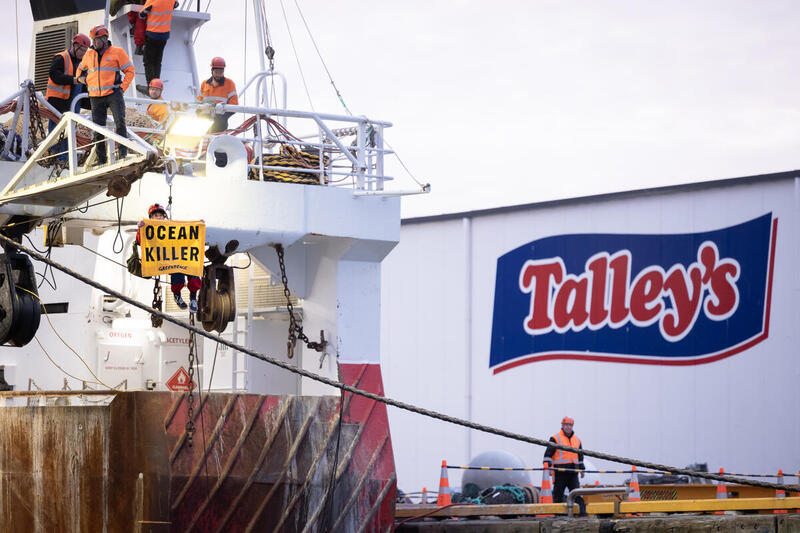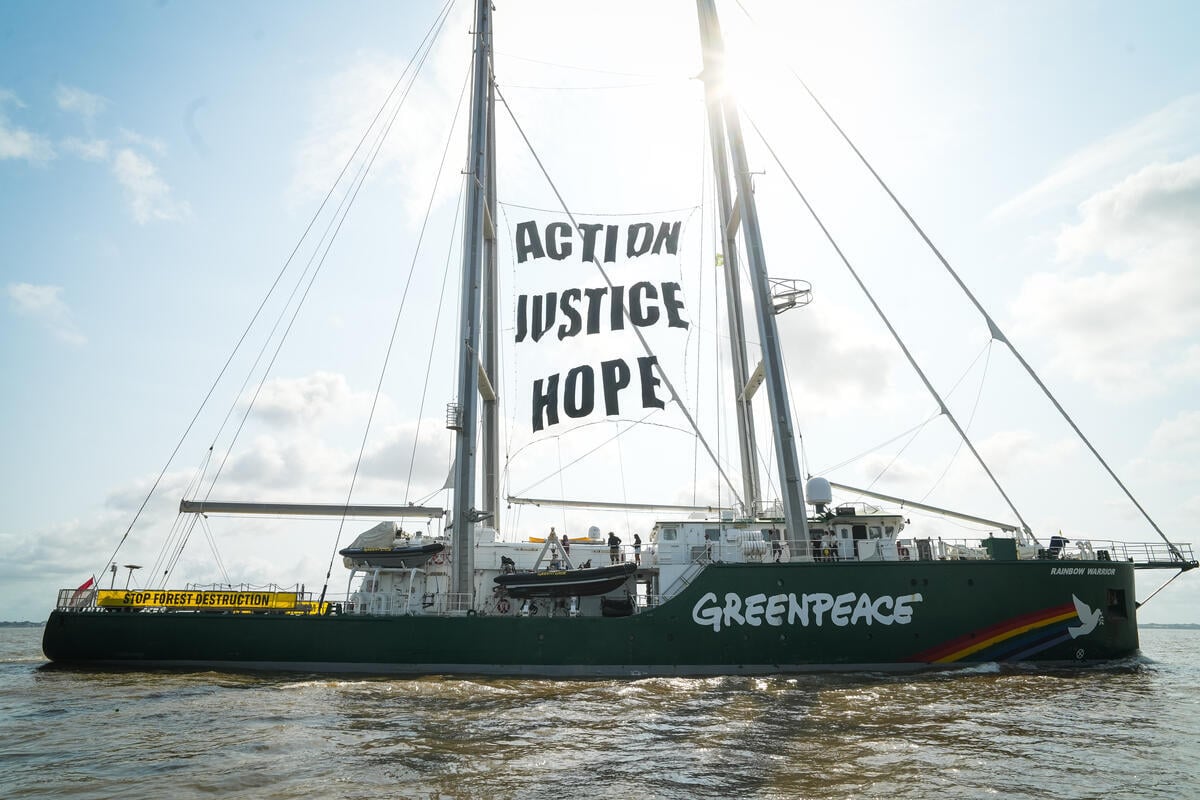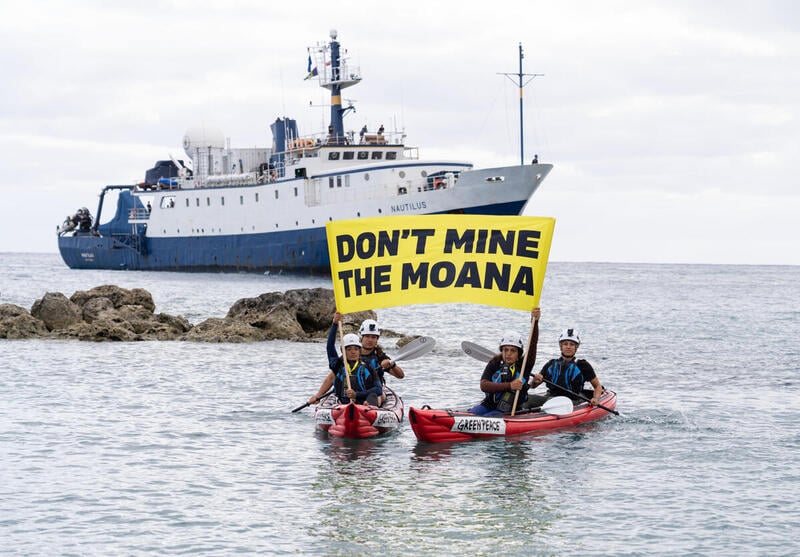Nelson: Greenpeace Aotearoa activists have boarded a bottom trawling vessel this morning, stopping it from leaving the Port of Nelson in protest at the company’s links to ocean destruction in both New Zealand waters, Australia’s and the high seas.
Greenpeace activists boarded Talley’s Amaltal Columbia, with one climbing the stern of the ship and unfolding a banner reading ‘OCEAN KILLER’.
One activist attached to the ship is prepared to stay put and prevent this trawler from causing more destruction on biodiverse seamounts.

Greenpeace spokesperson Juan Parada says: “Faced with a ruthless fishing industry that profits from trashing the ocean, and a government that condones bottom trawling, these brave activists took a stand, peacefully disrupting this destructive fishing method and calling the industry out for what they are: ocean killers.
“Bottom trawling is an incredibly destructive method of fishing that has no place on vulnerable habitats. When trawlers drag their heavy nets along the seafloor and over seamounts they bulldoze everything in their path, turning precious coral into rubble, and killing sharks, fur seals and seabirds as collateral – it must stop.
“These brave Greenpeace activists have disrupted the activities of Talley’s Amaltal Columbia today because Talley’s are ocean destroyers. The activist is prepared to remain in place for as long as they can to stop this trawler leaving the port”, says Parada.
The in-port action comes just two months after Greenpeace activists, launching from the Rainbow Warrior, confronted bottom trawlers at sea on the Chatham Rise, painting the same message “OCEAN KILLER” on the hull of two vessels – including Talley’s Amaltal Atlantis.
Talley’s has a long history of carrying out bottom trawling destruction. In 2018, the Amaltal Apollo trawled in a protected area on the Lord Howe Rise, in the international waters of the Tasman Sea. The Amaltal Mariner was convicted of trawling in a marine reserve off Kaikōura in 2019.
The Amaltal Columbia trawls around New Zealand and off the coast of Tasmania, where it has been active this month. It has also held permits in recent years to trawl in the international waters of the Tasman Sea.
“The trail of destruction caused by the Amaltal Columbia is wide and long-lasting, stretching from the waters of Aotearoa across to Tasmania” says Parada.
“We’ve all seen the shocking footage of bottom trawling in David Attenborough’s Ocean, and it’s happening right on our doorstep.
“The public mandate for change is clear. New Zealanders want healthy, thriving oceans and they want trawling banned from seamounts, including in the Tasman Sea.”
New Zealand is the last country operating a bottom trawling fleet in the High Seas of the South Pacific, including in an area of the Tasman Sea which has been flagged for early protection under the Global Ocean Treaty.
New Zealand is facing international criticism for continuing with this practice.
“The New Zealand Government is actively putting fishing interests above ocean health, repeatedly blocking the protection of seamounts in the High Seas of the Tasman” says Parada
“As the world – including our neighbours in the Pacific – moves towards ocean protection and implementing a historic Global Ocean Treaty, the New Zealand trawling industry is standing in the way of progress.
“From depleted fish numbers to smashed coral, dead sharks and seabirds, the cost of bottom trawling is too high. To safeguard the ocean we all love bottom trawling must stop.”
In June Greenpeace activists confronted two New Zealand bottom trawlers at sea, Talley’s Amaltal Atlantis and Sealord’s Ocean Dawn painting “Ocean Killer” on their hulls while they trawled on the Chatham Rise, off the east coast of the South Island.
Greenpeace activists also blocked the Amaltal Atlantis from leaving Port Nelson for nearly 10 hours in 2022.



